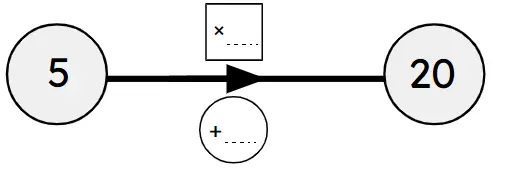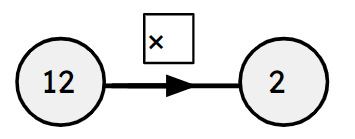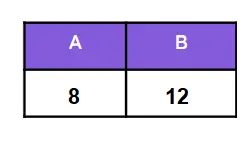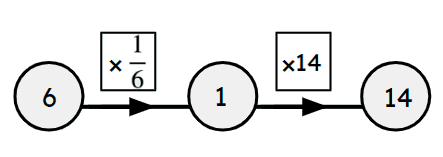Myths about teaching can hold you back


- Year 7


- Year 7
Multiplicative relationships
I can calculate the multiplier for any two given numbers.
These resources were made for remote use during the pandemic, not classroom teaching.
Switch to our new teaching resources now - designed by teachers and leading subject experts, and tested in classrooms.
Lesson details
Key learning points
- Any value divided by itself is equal to one.
- One is the multiplicative identity.
- There exists a multiplier for any pair of values.
Keywords
Reciprocal - Reciprocal is the multiplicative inverse of any non-zero number. Any non-zero number multiplied by its reciprocal is equal to 1
Common misconception
Using additive strategies instead of multiplicative.
Emphasise that proportional relationships maintain a constant multiplier so we are looking for a multiplicative relationship.
To help you plan your year 7 maths lesson on: Multiplicative relationships, download all teaching resources for free and adapt to suit your pupils' needs...
To help you plan your year 7 maths lesson on: Multiplicative relationships, download all teaching resources for free and adapt to suit your pupils' needs.
The starter quiz will activate and check your pupils' prior knowledge, with versions available both with and without answers in PDF format.
We use learning cycles to break down learning into key concepts or ideas linked to the learning outcome. Each learning cycle features explanations with checks for understanding and practice tasks with feedback. All of this is found in our slide decks, ready for you to download and edit. The practice tasks are also available as printable worksheets and some lessons have additional materials with extra material you might need for teaching the lesson.
The assessment exit quiz will test your pupils' understanding of the key learning points.
Our video is a tool for planning, showing how other teachers might teach the lesson, offering helpful tips, modelled explanations and inspiration for your own delivery in the classroom. Plus, you can set it as homework or revision for pupils and keep their learning on track by sharing an online pupil version of this lesson.
Explore more key stage 3 maths lessons from the Understanding multiplicative relationships: fractions and ratio unit, dive into the full secondary maths curriculum, or learn more about lesson planning.

Licence
Prior knowledge starter quiz
6 Questions
Q1.A ____________ is the multiplicative inverse of any non-zero number. Any non-zero number multiplied by its __________ is equal to 1
Q2.What is the additive relationship between the numbers shown?

Q3.Using the function machine, what is the multiplicative relationship between the numbers?

Q4.Match the numbers with their reciprocal.
2 -
$$\frac{1}{2}$$
3 -
$$\frac{1}{3}$$
$$\frac{3}{2}$$ -
$$\frac{2}{3}$$
-3 -
$$\left(-\frac{1}{3}\right)$$
-2 -
$$\left(-\frac{1}{2}\right)$$
$$\left(-\frac{5}{2}\right)$$ -
$$\left(-\frac{2}{5}\right)$$
Q5.Which of these operations could connect these two numbers?

Q6.Which of these would fit the multiplicative relationship?

Assessment exit quiz
6 Questions
Q1.Only using one step, what is the additive relationship for the connection of these numbers?

Q2.What two steps can be applied here for the connection of these numbers?

Q3.Using the function machine, what is the multiplicative relationship between the numbers?

Q4.What is the single additive step that connects these numbers?

Q5.Using the values in the table, match the following.

The additive step from A to B -
4
The additive step from B to A -
(-4)
The multiplier from A to B -
$$\frac{3}{2}$$
The multiplier from B to A -
$$\frac{2}{3}$$
Q6.What is the single multiplier?


